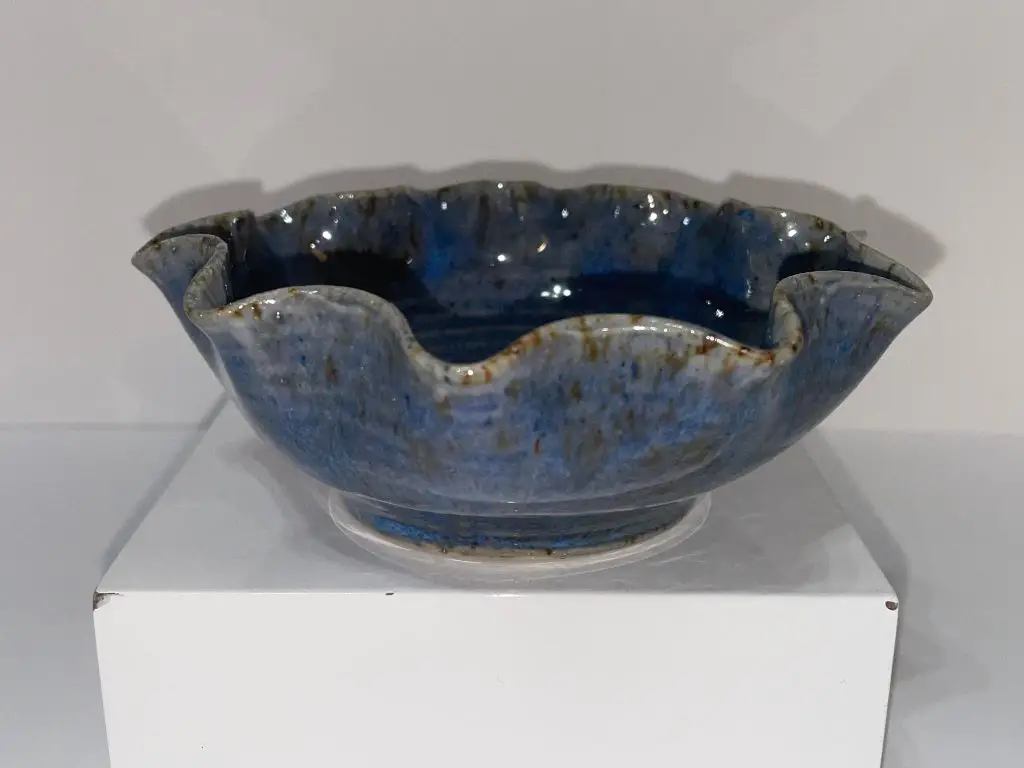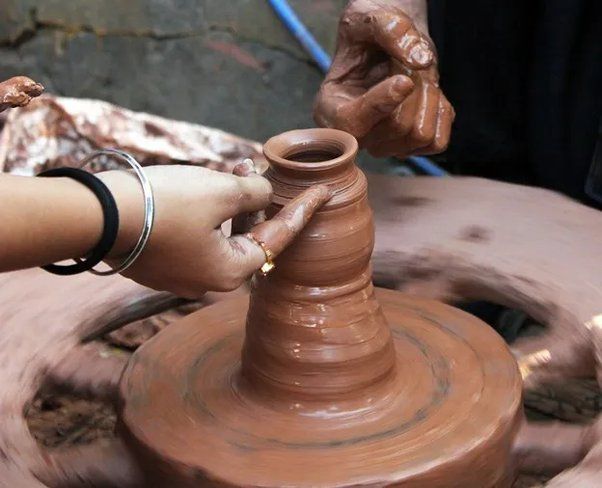What Happened To Pigeon Forge Pottery?
Pigeon Forge pottery refers to the pottery that was produced in the small Appalachian town of Pigeon Forge, Tennessee starting in the late 19th century. The production of pottery in Pigeon Forge has a long history tied to the settlement of the town in the early 1800s. Pioneer settlers like the Ogle and Wear families established small potteries, taking advantage of the abundance of natural clay deposits in the surrounding Great Smoky Mountains.
Pigeon Forge pottery became known for its utilitarian stoneware like jugs, churns, and crocks, often with beautiful blue glazes made from local materials. Over time, art pottery styles emerged as well, with decorative pieces like vases and figurines. The potteries primarily used traditional techniques like salt glazing and alkaline glazing (History of Pigeon Forge Pottery).
By the early 20th century, Pigeon Forge had over a dozen small potteries producing wares with distinctive regional styles. The success of Pigeon Forge pottery was tied to the thriving tourism industry in the Great Smoky Mountains in the first half of the 1900s.
The Rise of Pigeon Forge Pottery
Pigeon Forge gained recognition for its distinctive style of traditional Appalachian pottery starting in the early 1900s. Local potters used techniques passed down for generations to produce functional stoneware, jars, jugs, and churns glazed with earthy colors like blue, green, yellow and brown. The natural clay found in the surrounding Great Smoky Mountains contributed to the unique look and quality of Pigeon Forge pottery.
Several influential pottery studios helped grow the reputation and popularity of Pigeon Forge pottery in the early-to-mid 1900s. These include the Owenby Pottery studio started by Walter Owenby in 1910, known for churns and pitchers; the Cogdill Family studio opened in 1919 by Ulysses Cogdill, known for their hand-turned vases and pitchers; and the Caton Family studio opened in 1934 by L.B. Caton, recognized for award-winning face jugs.
Pigeon Forge potters began earning regional and national acclaim in the 1930s-1950s. Juan Self received first place awards at the Knoxville Fair in the 1930s. J.B. Owenby won the Grand Champion Bowl award at the 1982 World’s Fair. The simplicity and craftsmanship of Pigeon Forge pottery was praised in national magazines like House Beautiful.
Challenges and Decline
The Pigeon Forge pottery industry began facing challenges in the 1950s. One major issue was increased competition from other craft centers like Gatlinburg, TN which was also growing as a tourist destination and featured many craft shops and studios 1. Changes in tourism patterns also impacted Pigeon Forge pottery. As more vacationers began traveling by car rather than train, they often opted for quicker visits focused on outdoor sites like the newly opened Great Smoky Mountains National Park rather than exploring attractions like craft shops and studios2.
Pigeon Forge pottery was further challenged as some of the pioneering master potters began retiring or passing away in the 1950s and 60s. These skilled artisans had been essential in training younger generations in the craft. Without these teachers, fewer young potters developed the required expertise to create the high-quality pottery the area was known for2. This loss of master potters contributed to the decline of Pigeon Forge as a major pottery center.
Impact of the Great Smoky Mountains National Park
The establishment of the Great Smoky Mountains National Park in 1926 greatly impacted the pottery industry in Pigeon Forge. According to History of Pigeon Forge, President Calvin Coolidge signed the park bill on May 22, 1926, but it took 14 years for the park to be fully established. This disrupted many of the pottery studios and sales venues that had existed in the area before the park.
While the park brought many new visitors to Pigeon Forge, it also meant that potters could no longer freely dig clay on park lands or sell their wares inside the park as they once did. This caused many pottery operations to close or relocate outside of the new park boundaries. Over time, the remaining Pigeon Forge potters adapted by opening new studios and galleries in the town to cater to tourists visiting the national park. According to Pigeon River Pottery – The Old Mill, modern pottery captures the spirit of Appalachia and the Great Smoky Mountains through both style and marketing.
Modern Revival

In recent years, there has been a renewed interest in reviving the Pigeon Forge pottery tradition. After decades of decline, several new studios and artists have emerged dedicated to bringing back this unique art form. Many of these new potters draw inspiration from historic Pigeon Forge styles and techniques while also incorporating modern themes and interpretations (1).
One of the most prominent new studios is Clay Dreamers, opened in Pigeon Forge in 2010. Clay Dreamers focuses on handmade functional pottery with beautiful glazes and designs. Their pieces often showcase natural themes like leaves, flowers, and woodgrain. The studio offers classes and behind-the-scenes tours to connect the public with this historic craft (2).
Individual potters like Muddy Fork Pottery have also emerged in recent years, selling their wares online and at festivals and craft shows. Many focus on recreating historic regional styles, like the Cades Cove Pottery once produced in the Great Smoky Mountains. These potters keep the Pigeon Forge tradition alive while also experimenting with new techniques and aesthetic styles (3).
Local museums and art leagues also sponsor workshops, classes, and exhibits that shine a spotlight on Pigeon Forge pottery’s history and future. These efforts educate new generations of artists and cultivate further interest in discovering and reviving this unique craft. After years of declining production, Pigeon Forge pottery seems to be experiencing a modern resurgence and renaissance.
Sources:
Notable Pigeon Forge Pottery Styles
Pigeon Forge is known for its rich tradition of pottery making, with two main styles that have emerged over the years. The first is a classic style characterized by earthy glazes, hand-thrown shapes, and nature-inspired designs. This style uses traditional techniques like wheel throwing, hand building, and wood firing to produce functional pottery with an organic aesthetic. Many pieces feature leaf or tree motifs, bees, dragonflies, and geometric mountain shapes. This classic style was pioneered by potters like David Ownby and continues to be popular today.
A more contemporary style also developed in Pigeon Forge using bright colors and glossy glazes. This style applies decals and hand-painted designs like flowers, birds, and fish to vases, pitchers, and decorative pieces. The Little Mountain Pottery studio helped establish this style in the 1960s-70s. Their pottery combined traditional wheel throwing and hand building with decals, lustrous glazes, and ornate shapes for a polished, modern look. This expanded the repertoire of Pigeon Forge pottery and attracted new collectors and tourists over the years.
Current State of the Industry
Today, the Pigeon Forge pottery industry remains small but vibrant. Though not as bustling as its heyday in the 1960s and 70s, there are still several active artisan pottery shops in the area keeping the tradition alive.
According to the Pigeon River Pottery shop at The Old Mill, there are about a dozen potters still creating handmade pottery locally. While mass manufacturing forced many shops to close over the years, the remaining potters focus on quality over quantity, producing handcrafted wares in small studio settings.
These artisans produce a wide range of functional and decorative pottery, from mugs and vases to ornaments and figurines. Production is small-scale, relying on traditional pottery wheels and kilns. The iconic Pigeon Forge Pottery style remains popular with tourists visiting the Great Smoky Mountains.
Though no longer the booming business of decades ago, Pigeon Forge pottery has found its niche as a beloved mountain tradition and handicraft. Local shops attract tourists seeking authentic Appalachian crafts and souvenirs from the Smokies. While niche, pottery remains an iconic part of Pigeon Forge’s heritage and tourist offerings.
Future Outlook
The future of Pigeon Forge pottery looks promising as new generations of artists revive historic techniques and styles. According to expert Doris Boling, Pigeon Forge is poised for a “new era of growth and revitalization” as young ceramic artists embrace ancestral practices. Advances in kiln technologies, glazing chemicals, and digital modeling enable creators to explore innovative designs while preserving handcrafted methods.
Artists are also leveraging ecommerce platforms like Etsy to directly market their wares to consumers worldwide. Online sales allow artists to sustainably grow their business without relying solely on seasonal tourist traffic. As Pigeon Forge pottery gains global digital exposure, a new generation of collectors is discovering the region’s unique styles. Overall, experts predict a vibrant future for Pigeon Forge pottery as artists blend historic and modern techniques for a 21st century revival.
Lessons Learned
The story of Pigeon Forge pottery offers important lessons for other small towns and niche craft industries looking to sustain and grow their businesses. As Pigeon Forge pottery declined due to competition from overseas and changes in tourism, other craft towns can avoid a similar fate by focusing on quality, reinforcing their brand identity, and leveraging technology.
A key lesson is to never compromise on quality. As production moved overseas, quality and uniqueness suffered. By maintaining exceptional quality standards and craftsmanship, small producers can justify higher prices and reinforce their reputation for premium goods. Leveraging partnerships and apprenticeships can help pass on generational knowledge.
It’s also critical that niche craft businesses promote and protect their regional brand. By emphasizing their heritage, tradition, and local roots, they can tell an authentic origin story that large corporations cannot replicate. Trademarking logos and style elements also helps prevent copying.
Finally, leveraging online channels and social media for sales, marketing and community building is vital for sustaining and growing a niche craft today. An online presence makes small businesses accessible to wider audiences. Strategic use of technology, while retaining traditional production methods, can help niche crafts thrive in the modern economy.
Conclusion
In summary, Pigeon Forge pottery has a long and storied history in the Great Smoky Mountains region. It emerged in the early 19th century as settlers arrived and made use of the abundant natural clay resources. The pottery flourished for decades, developing distinct regional styles and reaching a peak in the late 1800s. However, the industry declined due to transportation improvements, competition from mass-produced goods, and the loss of clay sources to the new national park. Though it never regained its former prominence, Pigeon Forge pottery experienced a modest revival in the late 20th century as interest in Appalachian crafts grew. Today, just a handful of potters keep the tradition alive, producing both functional wares and artistic pieces for tourists and collectors. The legacy of Pigeon Forge pottery remains an important part of the culture and history of the Smokies.
As we’ve seen, the story of Pigeon Forge pottery is one of growth, struggle, and reinvention. The families that started the first potteries could hardly imagine the changes that would transform their way of life. But the region’s creative spirit endures, expressed now through studio crafts like pottery. Pigeon Forge celebrates this history and culture, and new generations of artisans carry on the handmade traditions of the Smokies. Though much has changed over the years, the essence of Pigeon Forge pottery remains the same – a unique artistic tradition rooted in the ancient human impulse to shape earth into objects of utility and beauty.



